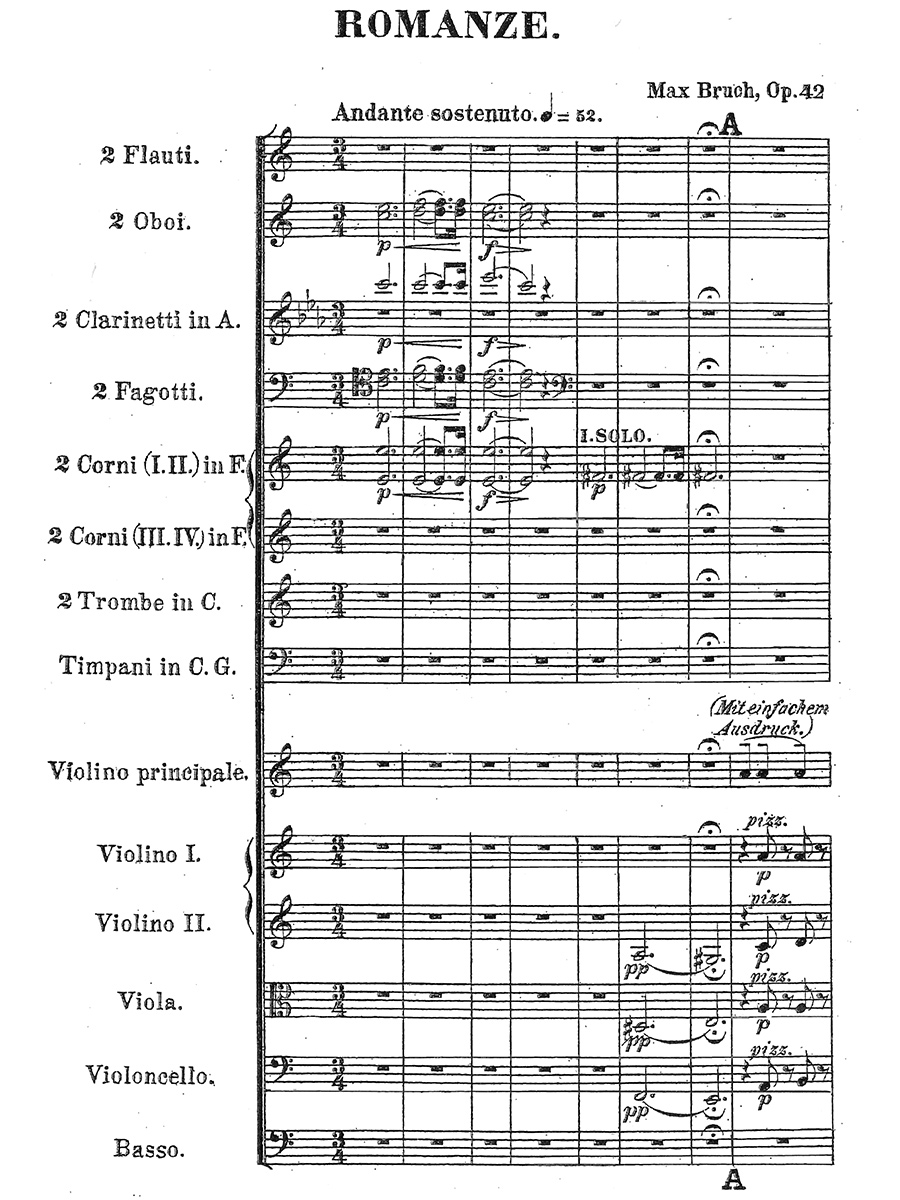Romance for Violin and Orchestra in A Minor, Op. 42
Bruch, Max
19,00 €
Preface
Max Bruch
(b. Jan. 6, 1838, in Cologne; d. Oct. 2, 1920, in Friedenau, near Berlin)
Romance for Violin and Orchestra in A Minor, Op. 42
Foreword
Among the ‘non-violinist’ composers of the 19th century, Max Bruch is by a clear margin the one who devoted himself the most intensively to the violin.1 Thus, in addition to the three violin concertos, there are numerous other works for violin and orchestra in one or more movements which bear witness to the master’s deep affection for the instrument.
His first work for this combination, the Violin Concerto No. 1 in G minor, Op. 26, immediately brought the composer great praise. However, the enduring success of the G minor Violin Concerto, which has lasted up to the present day, led to all his subsequent works in concertante form receiving little attention. The composer’s initial joy at its overwhelming success therefore soon turned into deep disappointment and bitterness, to the extent that he even jokingly formulated a ‘legal ban’ on his Violin Concerto No. 1.2
This is a development that Bruch could of course not foresee when, in 1873, and so five years after the first performance of his beloved G minor Violin Concerto, he began work on a piece that was subsequently published as the Romance for Violin and Orchestra in A minor, Op. 42. Originally Bruch had quite different plans. The piece headed by the performance marking Andante sostenuto was in fact intended to form the opening movement of a new violin concerto. As is clear from a letter to his friend the violinist Joseph Joachim, he had been thinking as early as 1873 of writing ‘a second violin concerto’, which ‘was to begin with a broadly conceived Andante’.3 However, after he had completed the first movement, Bruch changed his original plan and left it as a single-movement piece. The reasons for this decision are probably, on the one hand, self-doubt, and, on the other, the fear of not matching the quality of his successful Violin Concerto No. 1 and so disappointing expectations.4 Bruch made the following comment on his decision in a letter to Joachim:
Having recently expanded, ended and orchestrated this Andante, I (and others) cannot help feeling that it is a complete piece in itself and does not need or allow further extension to become a concerto. I have therefore provisionally given it the title ‘Romance’ […].5
The work was to retain the title Romance. Whatever may have moved the composer to take this step, the restriction of the work to a single movement does no disservice to it. On the contrary, the Romance captivates the listener throughout with its irresistible charm and beauty.
Two themes, each of which is presented by the solo violin, are an essential feature of the work. Despite the major-minor contrast built into them and the difference in dynamics, the two themes can be said to be related to each other through their inherent lyricism and the structuring of the opening motif with threefold note repetitions. The second theme in particular, with its double stopping at the same time as a forte espressivo marking, is impressive in its elegance. In general, the violin has a leading role. By contrast with his earlier violin concerto, where the orchestra and the solo instrument at times complement each other, the orchestra in the Romance is almost entirely reduced to an accompanying role. The actual themes are mainly reserved for the solo violin. There are only a few places in which short passages develop into dialogues between orchestra and soloist, or the orchestra takes up elements of the themes. From the point of view of its formal structure, with the exposition of two themes, a middle section which is a kind of development section and – what is typical for Bruch – an abbreviated recapitulation, the Romance has distinct features of sonata form, which can be seen as a survival of the original role of the piece as the opening movement of a concerto.
Read full preface > HERE
Score Data
| Edition | Repertoire Explorer |
|---|---|
| Genre | Violin & Orchestra |
| Size | 210 x 297 mm |
| Piano Reduction | available |
| Printing | Reprint |
| Pages | 54 |
